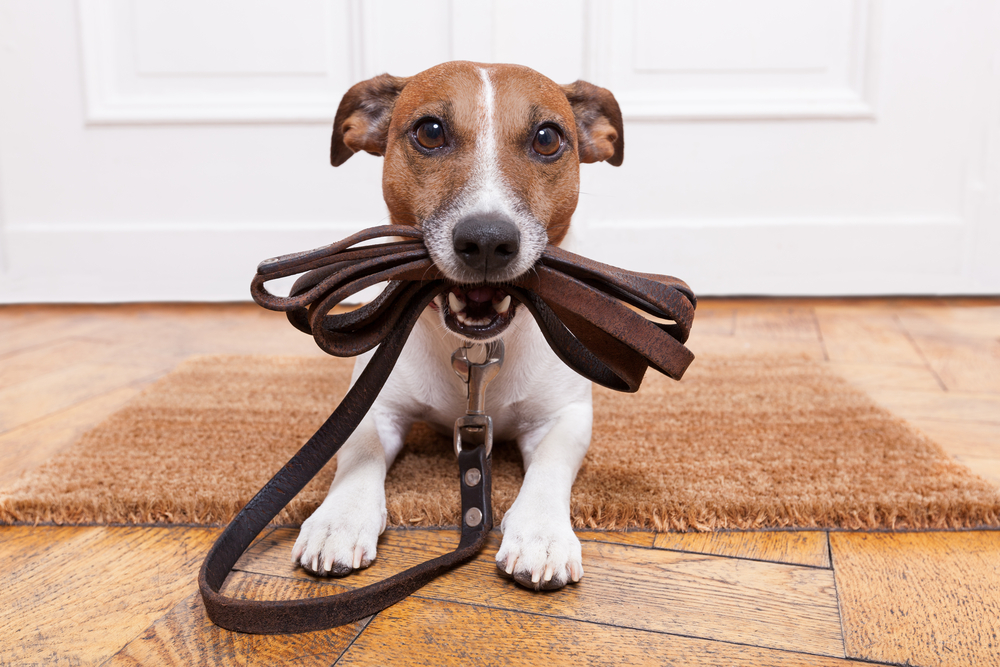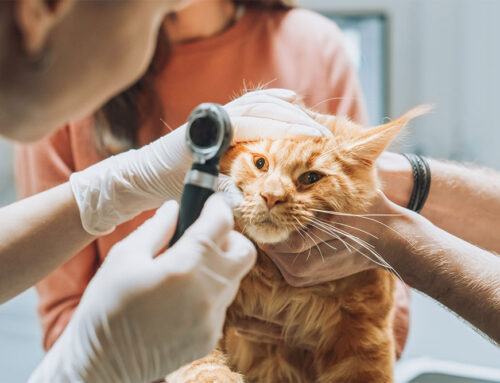January is not only the time to set your intentions for the next 365 days—it’s also National Dog Training Month. To recognize both, the Livingston Veterinary Hospital suggests that you make teaching your four-legged companion to become man’s best friend one of your New Year’s resolutions.
While the advantages of a well-trained dog seem obvious—they have better manners, increased safety, improved sociability, and are generally easier to live with and care for—the path to canine good manners can be long, with a great deal of patience, empathy, and creativity required. Keep the following advice in mind when preparing to train your dog.
#1: Work with a credentialed positive reinforcement dog trainer
Dog training is an unregulated industry—meaning that anyone can call themselves a professional trainer, no matter their schooling, ethics, or experience. In other words, many trainers are disreputable and unqualified, but will happily take your money, and leave you and your dog frustrated and confused—or worse.
The American Veterinary Society of Animal Behavior endorses positive reinforcement-based training (i.e., clicker training or reward-based training methods) and denounces dominance theory and correction-based training. Therefore, we encourage you to find a credentialed dog trainer who has studied canine behavior and learning methods, as well as modern training techniques and methodology. Such trainers should have Certification Council for Professional Dog Trainers (CCPDT) or the Karen Pryor Academy (KPA) certification and display the corresponding credentials of CPDT (Certified Professional Dog Trainer) or KPA-CTP (Certified Training Partner).
Please note that if your dog suffers from behavior disorders, such as aggression, extreme fearfulness, anxiety, resource guarding, reactivity, or obsessive behaviors, you must contact a veterinary behaviorist. Never attempt to manage these problems yourself.
#2: Use management strategies to limit your dog’s undesirable behaviors
Improving your dog’s behavior and eliminating bad habits won’t happen in a single training class. Behavior management strategies and tools help prevent or minimize unwanted behaviors until they can be resolved through training. Instead of allowing your pet to rehearse their inappropriate behavior (e.g., jumping up on guests, barking at the window, or destroying the couch when you leave), management restricts your pet’s access or exposure to the triggering stimuli.
Common management tools include:
- Crates
- Leash and collar
- Pet gates or pens
- Visual barriers (e.g., closed curtains or doors, fence, covered crate)
- Alternative routes (i.e., avoiding stressful stimuli on a walk by crossing the street, taking the stairs instead of the elevator)
- Removing stimuli when possible (e.g., picking up your shoes to prevent chewing
Management is generally a temporary fix until training eliminates the behavior, but many dog owners find the tool can be a permanent solution.

#3: Set your dog up for success
Once your management tools are in place and you’re preventing your dog from behaving inappropriately, show them what you want. Your trainer will encourage you to always set your dog up for success, which means controlling your dog’s environment so they can easily—almost effortlessly—perform the correct behavior.
You’ll do this by using effective dog training practices, such as:
- Working on one behavior at a time — Dogs learn more quickly when they can focus on one specific task or step.
- Teaching new concepts in a low-distraction setting — Initially, train your dog inside your home, and then, as they learn to understand the behavior, gradually increase the challenge by changing rooms, stepping outside, or going to a quiet park or training building.
- Breaking large concepts or behaviors into smaller pieces — Dogs can’t make large logical leaps or generalize ideas, so split big concepts or tasks into bite-size behaviors. For example, teach “Sit” by first rewarding your dog for shifting their weight back, then for folding their hind legs, and finally for placing their hind end on the ground.
- Training for short time periods — Training is mentally exhausting, so keep your sessions brief (i.e., begin with 30- to 60-second sessions), play for a few minutes, and try again.
#4: Tell your dog when they are correct
We all know how much we like being told we’re right—those feel-good endorphins rush in and make you feel like a genius, if only for a moment. Contrast that with how you feel when someone tells you you’re wrong—you instantly feel defensive, frustrated, and may completely shut down.
Help your dog understand what you want by marking the exact moment that they are correct. Although this is generally performed with a clicker and treats, you can use an audible marker such as “Yes,” “Good,” or “Yep.” Always follow the click or spoken word with a food treat or toy reward. Although some trainers prefer a non-reward marker (e.g., “Tsk-tsk,” “No,” or “Eh-eh”) for incorrect behavior, this can demotivate and confuse some dogs. As long as you consistently mark and reward the correct behavior, the unwanted behavior will diminish.
#5: Be consistent when interacting with your dog
Good dog training includes training yourself to behave around your dog—which can be the most difficult part for many pet owners. Clear and consistent trainer behavior—including your expectations, cues (i.e., commands), and challenge level—helps your dog understand what you’re asking and builds their trust, confidence, and willingness to learn.
Dog training is one of the most rewarding and enjoyable experiences you can share with your four-legged friend, one of the greatest investments you can make in their emotional wellbeing, and one of the best ways to strengthen your bond. But, success is achieved only through mutual respect, trust, and—of course—lots of love and treats.
For additional dog training resources or recommendations, contact our well-behaved team at Livingston Veterinary Hospital.







Leave A Comment